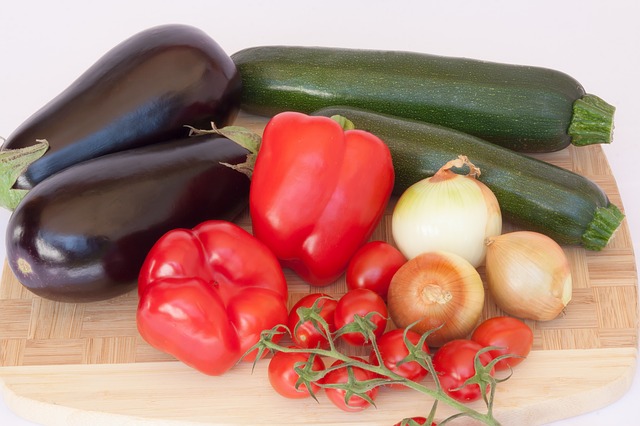Share the post "How to Pick Fresh Ripe Vegetables"

The secret to a delicious meal is perfect, healthy ingredients – we all know that. But picking the freshest vegetables and getting your money’s worth somehow always seems to be a gamble. We instinctively know to avoid bruised and blemished vegetables, but there is more to the art of picking fresh, nutritious vegetables from the lot.
Different vegetables in your grocery list have different shelf-lives, different tell-tale signs of being ripe and nutritious and different tips to select the best of the lot. While of course color, size and smell are great markers as a common thumb rule, here are some specific clues for the most common vegetables.
Onions, shallots and garlic
Onion and shallots should be heavy and firm or hard. Preferably opt for those with dark skins and those that are not sprouting.
For garlics too avoid the ones with green sprouts. Choose firm, plump heads.
Potatoes
Always pick firm potatoes that are free of bruises and cracks. Ideally, the skin should be wrinkle free. Steer clear of the ones with sprouts or a greenish tinge, as a green tinge is a sign of poisonous solanine and sprouting is a sign of staleness. Dirt on potatoes could be a sign of freshness, so don’t shy away from them. Preferably potatoes should be your choice of vegetable during autumn and winter.
Asparagus
Pick smooth, dark green spears with closed stiff tips. Asparagus doesn’t have a long shelf life, so consume soon after you purchase. Asparagus is best in the spring and early summer.
Bell Peppers
Bell peppers are extremely nutritious vegetables, and ones that should be on your often. Opt for smooth, heavy bell peppers that are not bruised or soft near the stems. Rattle the bell peppers and if you hear the seeds inside, put the bell pepper back. Rattling seeds represents that the bell pepper is old and stale.
Broccoli
Bright green, tightly budded heads in Broccoli is a sign of freshness. The buds being open is not a good sign and neither is a yellowish tinge. A purple cast however is great news! Broccoli is best enjoyed in summer.
Mushrooms
Pick mushrooms that look fresh, smooth and free from cuts and marks. Picking mushrooms is a little tricky as you should be able to differentiate between dried and dry surface, the latter being a good choice. An open membrane under the cap means richer stronger flavor.
Carrots
Always pick firm carrots that have a rich orange color and a smooth texture. Check at the root, to make sure that the carrot is not soft of flabby and avoid the thick ones. The shape of a carrot lets on a lot, so always pick medium sized carrots that taper off at the ends.
Eggplants
Shop for smaller eggplants that is smooth and shiny and rich in color. Eggplants that are heavy for their size are richer in flavor. Turn the eggplant around to ensure there are no cuts and bruises. And lastly, if the stalk isn’t green put the eggplant back on the shelf.
Cucumbers
Select firm cucumbers that are unblemished and dark green. In fact, slightly squeeze the cucumbers and make sure they don’t yield to the pressure. The skin of the cucumber should be thin and tight and not waxy and heavy. Any signs of shriveling at the opposite end of the stem indicates it is stale and starting to dry out.
Zucchini
The smaller, darker zucchinis are the ones to opt for. Make sure the zucchini is not too thick either. A tender zucchini will have small hair on its skin, and these are sure to taste great.
Share the post "How to Pick Fresh Ripe Vegetables"








 EN
EN  RU
RU